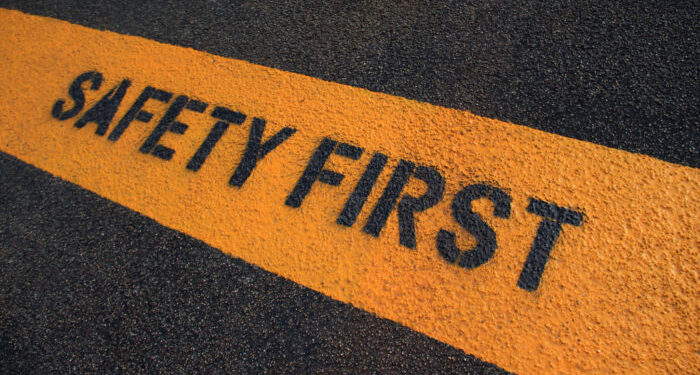In its latest Safety Digest, UK MAIB informs of an incident where a 2/E fell about 2m to the bottom deck plates, hitting pipes and their brackets on the way down and injuring his ribs and his left arm.
The incident
A 2/E was working alone in the engine room of a passenger ro-ro ferry conducting his post start-up checks of the main engines. This was a routine job undertaken before passing the machinery controls to the bridge, ready for departure.
He was a very experienced engineer and, having completed this task many times, had developed his own systematic route around the engines to ensure that all required items were inspected
He had checked all the fuel pumps for leakage by walking across the side of the engine on a raised walkway and looking vertically down into the fuel pump area. The 2/E planned to then check the oil fow for the bearings within
the turbocharger.
In order to get a better view of the oil sight glass, he placed his right foot on a nearby handrail that ran around the side of the engine. Once his full weight was transferred, one end of the handrail broke away from its stanchion, causing the 2/E to lose his footing and fall of the side of the engine. He fell about 2m to the bottom deck plates, hitting pipes and their brackets on the way down and injuring his ribs and his left arm.
He made his way to the engine room control room and telephoned the bridge to inform the master of his accident. As the vessel was still in port, the local emergency services were called and the 2/E was transported to a local hospital. There, he was treated for a broken rib before going home to recuperate.
Lessons learned
- The company had recognised the problems involved when checking the turbocharger oil some time previously, and had installed a step for this specifc purpose. However, accessing this step would have meant the 2/E climbing down of the engine; this did not fit in with his routine route. Rather than change his routine, the 2/E had developed an unsafe work-around, which he had been using for a long period of time without incident. This adaptive behaviour led to him lapsing into danger and away from the company’s safe way to operate. Had the 2/E stood back for a moment and considered what he was doing, and then discussed it with colleagues undertaking a risk assessment, he would most likely have recognised the danger and stopped the practice.
- Routine tasks can often lead to a slow drifting away from standard operating procedures and mitigating measures detailed in risk assessments. Before undertaking a task it is always worth spending a few minutes to reacquaint yourself or your team with the standard operating procedures, and to review the risk assessments. Standard operating procedures and risk assessments can always be amended to refect a safer and more efcient way of undertaking a task, and good quality organisations will have a process in place for making these changes.
- Lone working carries a unique set of hazards that require steps to be taken to mitigate them. The 2/E was fortunate that his injuries were not severe and that he could summon help. Local risk assessments for lone work should always consider the additional potential consequences of the worker not being able to communicate or to raise the alarm.

































































